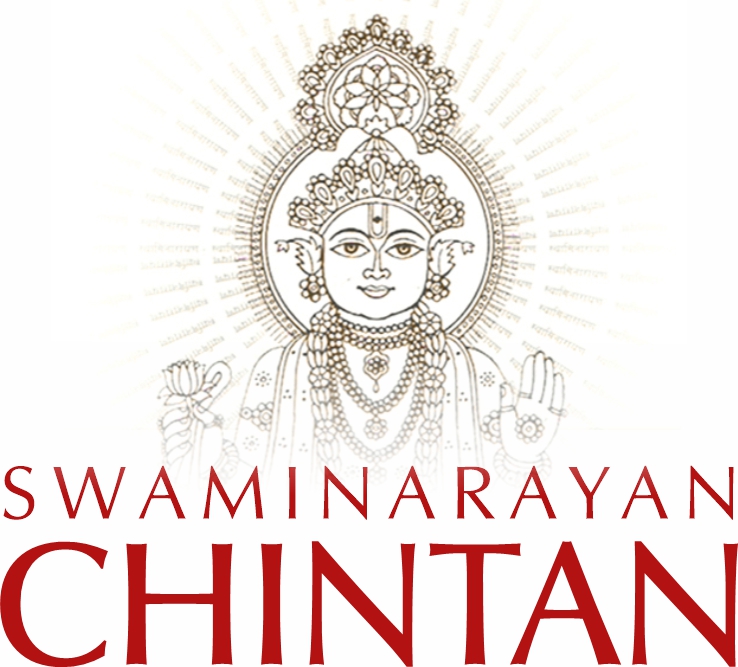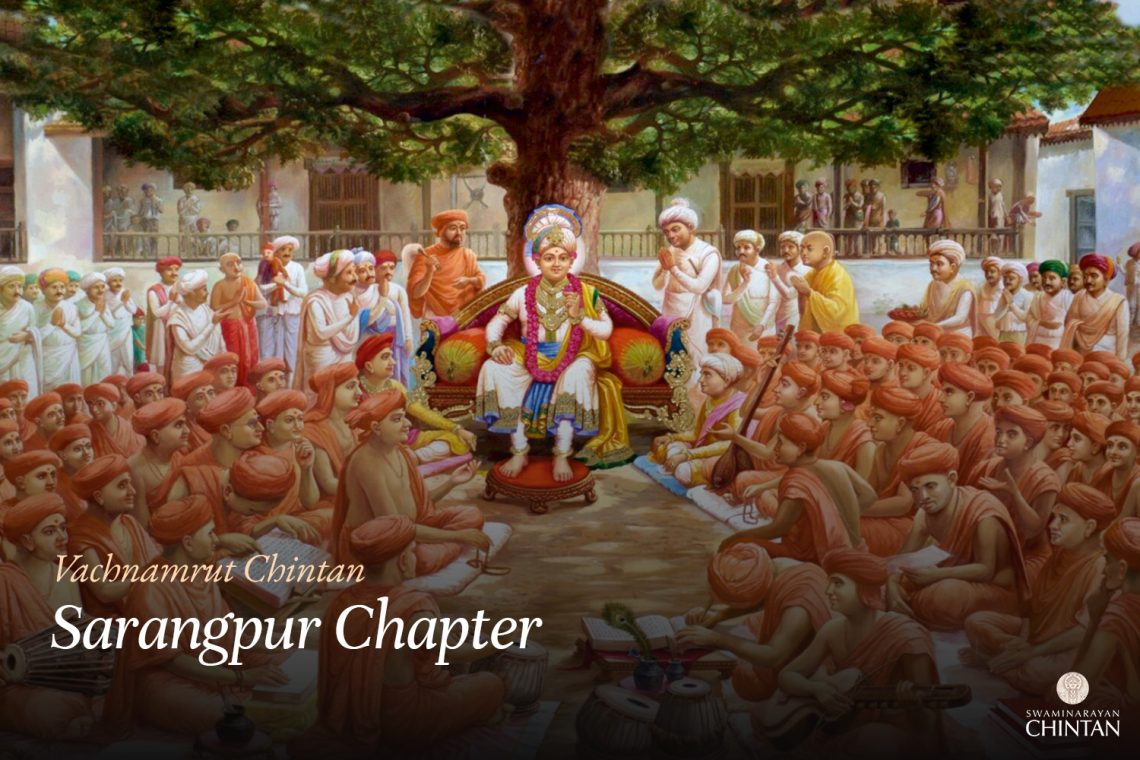Central Insights:
- What is Naimisharanya Kshetra from a spiritual perspective? (Or what place is considered as such?)
Main Points:
- The place where the blades of the Manomay Chakra, which are the senses, become blunt should be known as Naimisharanya Kshetra.
- The spiritual Naimisharanya Kshetra is present in the company of true Ekantik Sadhus of Bhagwan.
- In Naimisharanya Kshetra, spiritual practices and virtuous deeds performed grow day by day.
Commentary:
In this Vachanamrut, it is mentioned in the first canto of the Bhagwat that Sut Purani narrated the story of Bhagwat to Sanakadik Rishis in Naimisharanya Kshetra. The Sanakadik Rishis had prayed to Brahmaji, requesting a suitable place for their thousand-year-long session. Brahmaji gave them a wheel and instructed them to start their session wherever the wheel became stationary. The wheel stopped at Naimisharanya Kshetra, where the Rishis then performed their long session. This place is located near Sitapur in Uttar Pradesh and is renowned as an ancient pilgrimage site. This story is found in the Puranas.
Here, Shreeji Maharaj has discussed the spiritual meaning of Naimisharanya Kshetra. Physically, Naimisharanya Kshetra refers to the place in Uttar Pradesh, but spiritually, it represents the Manomay Chakra. The mind and its stream represent the senses. According to the Purana, the wheel given by Brahmaji was worn down and became stationary in the area of Naimisharanya Kshetra. Similarly, it is essential to understand where the streams of the senses, which form the Manomay Chakra, become blunt. This occurs only in the presence of a true Sant. Therefore, in a spiritual sense, the place where God’s true Santo reside should be considered the real Naimisharanya Kshetra.
Even if a place is historically considered a great pilgrimage site, it cannot be deemed Naimisharanya Kshetra in a spiritual sense if the senses’ desires are not restrained or rejected there. Great Santos have written that the rejection or disdain for sensory objects occurs only in the presence of God’s Ekantik Sant. In all other places, sensory objects are respected. Therefore, the stream of senses cannot become blunt there. Enjoying sensory objects intensifies their stream, and hearing about the glory of sensory objects or seeing others enjoy them also sharpens the stream of senses. It is only in the presence of a true saint that these desires can become blunt.
Holy places, auspicious times, and great Santos all significantly aid the spiritual seeker. However, Shreeji Maharaj has given greater importance to the presence of a holy person over a holy place or auspicious time. राजा कालस्य कारणम्। — Raja Kalsya Karanam, the king is the cause of the time. Here, ‘time’ refers to ‘yug‘ or era. This means that the king, or leader, determines the environment of an era, whether it be Satya Yuga, Treta Yuga, Dvapara Yuga, or Kali Yuga. In a broader sense, a king is any leader of a field,whether it be a country, state, city, sect, political party, institution, or family. The environment of Satya Yuga and other eras is created based on the leader.
Time does not only refer to the hour of the day. The time in Satya Yuga also consists of 24-hour days and 12-month years, without any changes. However, time alters the general public’s mindset. We identify time by the blend of morality and spirituality in the ideological streams. During Satya Yuga, every person had a certain type of spiritual and moral thinking, which is why it is called Satya Yuga. The significant characteristic of Satya Yuga is not merely longevity and physical strength, but the moral and spiritual ideas outlined above. These characteristics made Satya Yuga renowned. Only a king or leader can propagate such ideas. During the time of the Kauravas and Pandavas, Vidurji and Yudhishthir were both considered incarnations of Dharma. However, Vidurji was a servant, while Yudhishthir was a king, which enabled Yudhishthir to propagate Dharma, while Vidurji could not. Therefore, only a leader can propagate such ideologies. This spiritual era is called Satya Yuga, which can sometimes prevail even in the dark Kali Yuga due to the influence of a great Sant.
Similarly, the land or earth does not undergo significant changes, but if the king or leader is virtuous, the country also becomes virtuous. Therefore, the leader alone can change both, but both together are not as successful in changing people’s ideologies. Hence, a person is given more importance than both. For this reason, Maharaj has prioritized a person over a place in defining the meaning of Naimisharanya Kshetra.
Furthermore, Maharaj has discussed when the stream of senses becomes blunt. He explained that just as an arrow with a sharp tip, sticks in a wall and a blunt arrow bounces back, the senses stick to objects of desire when they are attracted to them. However, if the soul recognizes the flaws of the five senses through the company of an Ekantik Sant, the senses will not stick to objects of desire but will bounce back. When this occurs, one should understand that the stream of the Manomay Chakra has become blunt. Such a place should be considered Naimisharanya Kshetra. In such a place, any virtuous acts like chanting, penance, vows, meditation, and worship that are undertaken will grow day by day. If such a place is not found, the attachment to the five senses will render the undertaken virtuous acts meaningless. Therefore, one should recognize and seek the true Naimisharanya Kshetra and serve there.
Glossary
| Ekantik Sant – Single-minded Saint of Bhagwan |
| Brahmavidya – Knowledge of Brahm (God) |
| Satya Yuga – Age of truth |
| Treta Yuga – The second age in the four Yugas, slightly less virtuous than Satya Yuga Associated with Bhagwan Ram and partial decline in Dharma. |
| Dvapara Yuga – The third age marked by further decline of righteousness Associated with Bhagwan Krishna. |
| Kali Yuga – Present Age The age of materialism and spiritual decline. |
| Dharma – Righteousness, moral and spiritual duties One of the four pillars of Ekantik Dharma and a primary means to blunt Manomay Chakra. |

